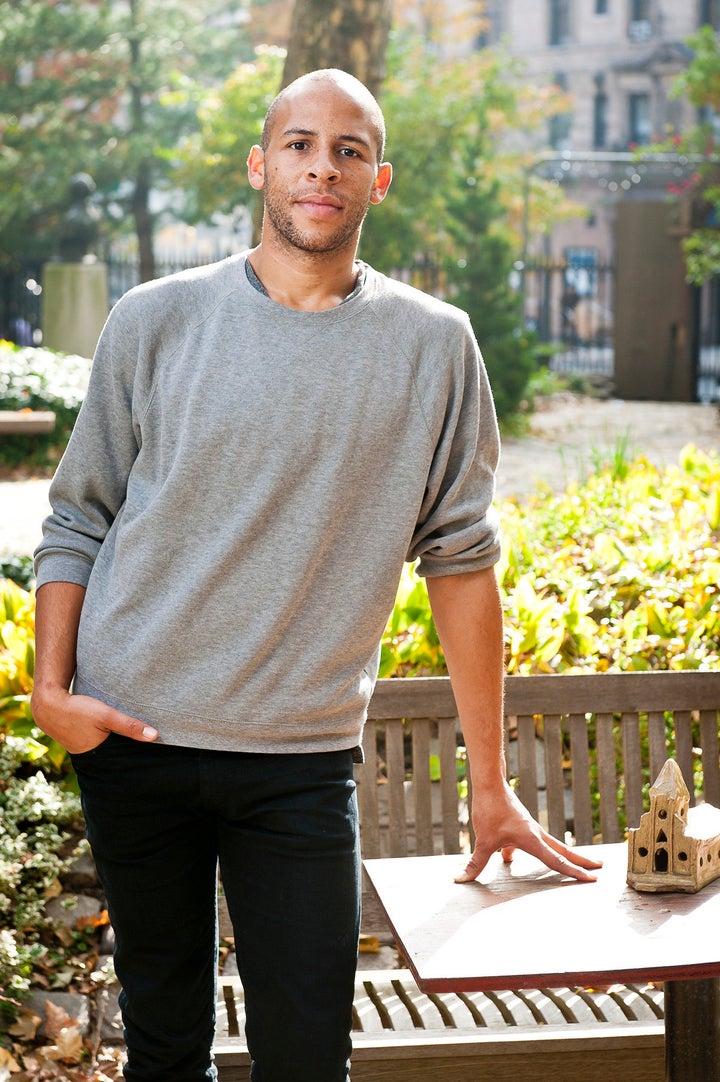
In 1982, choreographer Ishmael Houston-Jones curated a project called Parallels. He asked eight black artists to make dances, hoping to explore whether the terms "black dance" and "post-modern dance" made any sense together.
Thirty years later, Houston-Jones is still exploring. Platform 2012: Parallels, the latest of Danspace Project's Platforms, commemorates the anniversary of his initial experiment. The questions have changed slightly; the list of choreographers is longer; some of the participants (Pedro Jiménez, Young Jean Lee, Ann Liv Young) aren't black. But the idea -- so knotty that after three decades it continues to nag at an artist as sophisticated as Houston-Jones -- remains largely the same.
And now a confession: Programs like these make me a nervous critic. Deborah Jowitt, who felt the same sort of apprehension about the first Parallels, explained it eloquently in her review (re-printed in the excellent Platform 2012 catalogue): "When choreographers group...under the rubric of gender, race, nationality, political sympathies, I worry that I'll start fishing out evidence of, say, feminist concerns or Balkan heritages or, in this case, black issues, when the choreographers are not stressing these at all." Last Thursday, during the first performance evening of Parallels, Will Rawls stripped to his underwear and gyrated around in a way that made me think, oh: African tribal dance. And then I felt immediately embarrassed. Was I projecting a highly charged idea onto what was really a silly, funny moment? Was Rawls assuming that the audience would react as I did--and trying to make us feel uncomfortable about it? Was I over-thinking the whole thing?
I probably was. But there was so much evidence of Rawls' creative mind churning in his work, Frontispieces, which opened the two-part program. I wanted to think along with him, to keep up. Rawls spent most of the piece manipulating a pack of German shepherd cutouts--inspired, according to the program notes, by a painting he did three years ago. He stared into their eyes; threw them like Frisbees; stacked and re-stacked them; did a series of little dog experiments. As he grew more agitated, the dogs appeared to be both toys and torture devices, stand-ins for fears and fantasies. But at times the work felt impenetrable (see: tribal dancing). There was so much going on, and so little we could grab onto.
The evening's second work, Synthetic Action, had the opposite problem: It took one not-so-bad idea and stretched it frustratingly thin. Isabel Lewis--a wonderful performer who, sadly, did not appear in this piece--presented a meditation on the warm-up, the series of stretches and exercises every dancer devises to prepare the body.
Her young cast trickled in and, without any to-do, began their routines, accompanied by a mishmash of songs played softly from the small speakers scattered around the space. I expected that watching this most sacred of dance rituals would feel voyeuristic, like spying on a group of monks at prayer. Instead--as it became clear that nothing else was going to happen--the repetitive movements (there are only so many ways to stretch your hamstrings) grew dull. As the dancers left the stage one by one, I imagined that, this task completed, they were headed to some other stage, where the real show was about to begin.
A former dancer and choreographer, Margaret Fuhrer is an associate editor at Dance Spirit and Pointe magazines and a contributing editor at Dance Teacher magazine.